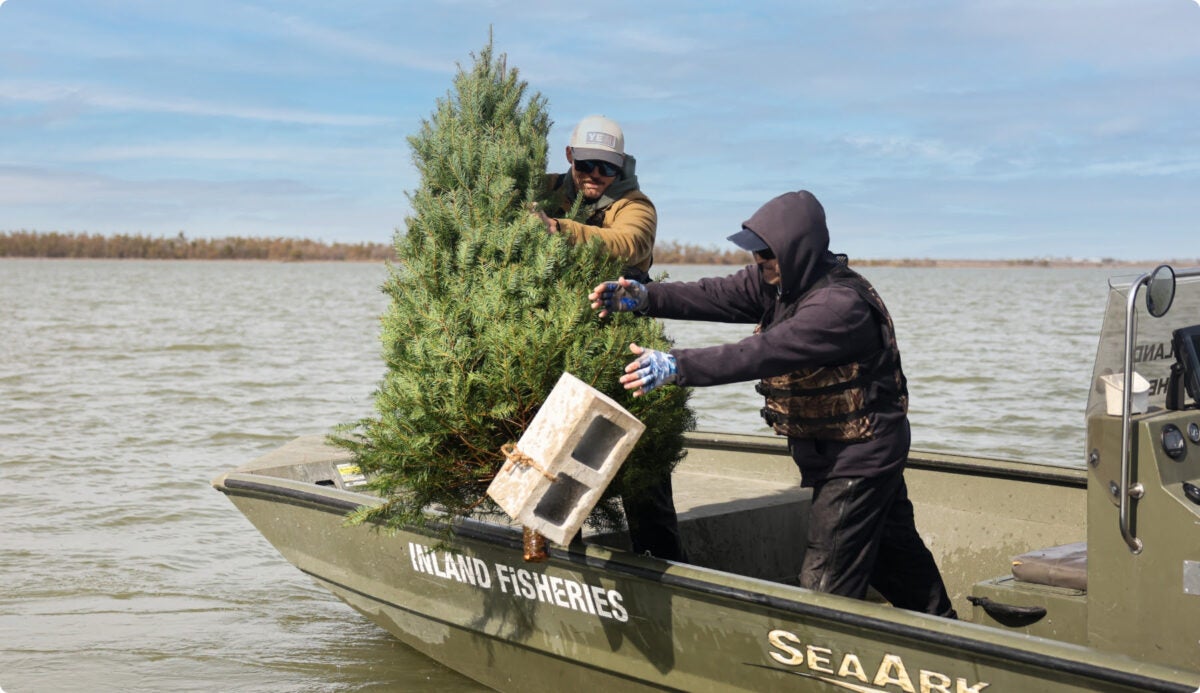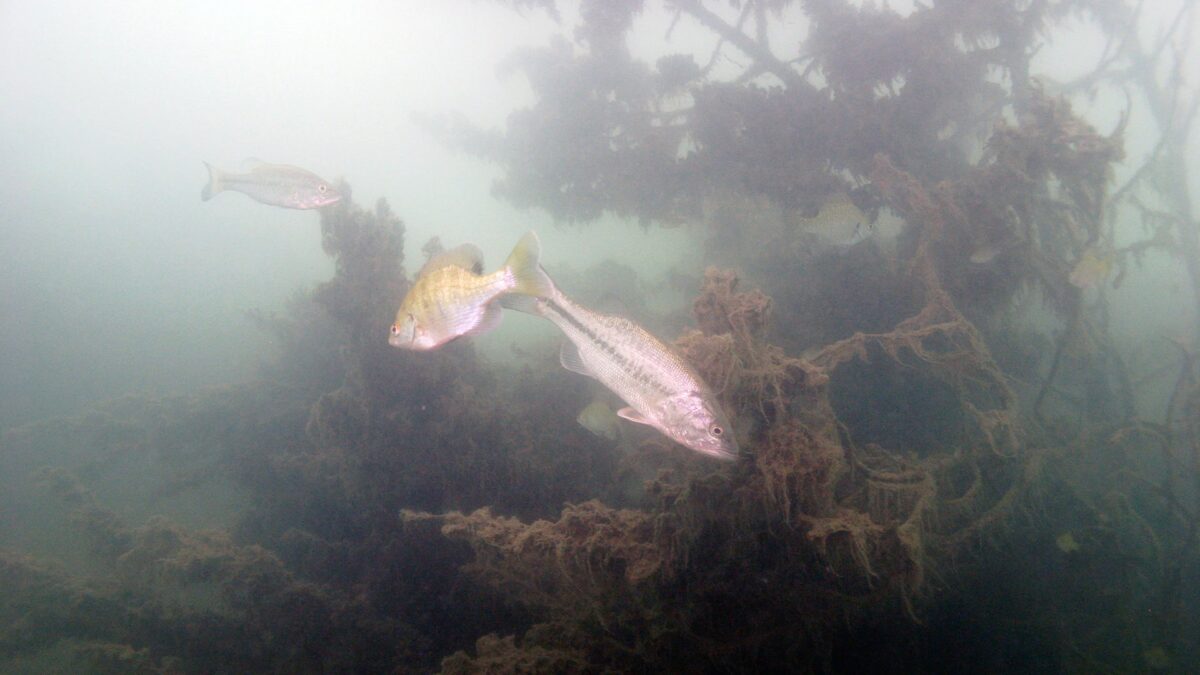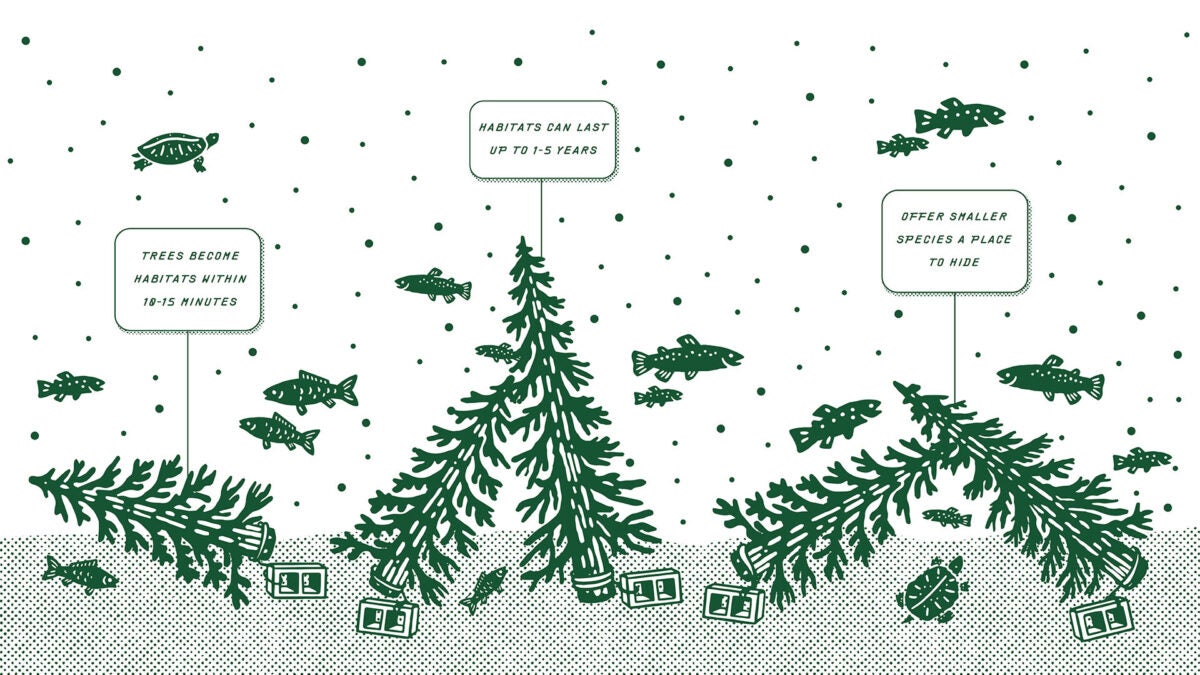YETI Transfers Christmas Trees to Better the Wild with YETI Fish Firs
Adam Scepaniak 12.20.23

As we roll through Christmas this December, YETI has found a new way to upcycle your Christmas tree, so it doesn’t end up in a landfill or simply does not find further value after the decorations are put away. By working with the Texas Parks and Wildlife Department (TPWD) and the Inland Fisheries Division of TPWD, they can take people’s Christmas trees and strategically sink them in bodies of water for more structure and habitat for local fish populations. This project – YETI Fish Firs – is something that is going on right now.
Yeti Coverage on AllOutdoor
- YETI Expands Yonder Water Bottle with 0.6L & 1.5L plus NEW Tether Cap
- Home on the Range #036: Yeti Tundra 75 Hard Cooler – AllOutdoor Review
- AllOutdoor Review – Yeti Loadout GoBox 30 Gear Case
- AllOutdoor Review – Yeti Panga 75L Waterproof Duffel
- New TAN Yeti Panga Dry Bags & SideKick Dry – Fully Submersible
When the holiday season comes to an end, it’s the perfect time to think about giving back. Before sending the centerpiece of your decor to the curb where it’s destined for the landfill, consider donating your Christmas tree to your local parks and wildlife department, like we did for this project with our friends at the Inland Fisheries Division of TPWD. As long as your Christmas tree isn’t plastic it can become a habitat for fish, and a future honey hole for anglers.
Nationwide, reservoirs are in need of habitat improvements. Sediment is washed into our river systems and accumulates in reservoirs. Over time, the trees and plants that fish rely on are covered up by settling dirt, resulting in a deficient habitat impacting the health of the fish populations as well and degrading fishing quality.
“Revegetation projects are underway, but a fir tree in the water provides an immediate habitat for the fish,” says John Findeisen. John leads a team within Aquatic Vegetation Management at TPWD, is the keeper of the Habitat Barge, and has been a fish biologist for 20 years.
Sunken brush — like fir, pine, or spruce Christmas trees — offers cover and foraging areas for fish. Bait fish like crappie will use the smaller spaces in the branches for protection from predators and foraging. Larger brush piles allow for the creation of holes that may be used by bigger predatory fish like largemouth bass and catfishes. And it really doesn’t take much before seeing the benefits. John says, “even within 10-15 minutes of sinking the tree, we see fish utilizing it as habitat.”
Well-placed habitat structures improve the concentration of fish in an area and improve the fishing for anglers. After the TPWD drops the trees, the coordinates are provided to anglers to fish these new honey holes. “Two of the biggest projects we did were at Lake Brownwood and Lake Proctor in central Texas in 2016,” explains Mike Homer Jr., a fisheries biologist with the TPWD. “The brushpile projects at these reservoirs used about 600 trees. While the feedback we receive on the fishing is anecdotal, we know the bass clubs had a lot of success fishing these locations,” says Mike.
Another big project was at Lake Corpus Christie State Park, an inland reservoir near the Gulf Coast where the TPWD dropped about 200 trees. If every neighborhood got together to recycle their trees instead of burn, mulch, or throw them out, larger waterbodies could have multiple reefs, more fish habitats could benefit, and it doesn’t hurt that anglers’ catch rates would also improve.
I believe the YETI Fish Firs project is an awesome idea because the more we can recycle or upcycle, the better our lives will be. Moreover, if we can help out fish, wildlife, and habitat at the same time, that is a complete Win-Win! Reach out to YETI if you want to participate in the YETI Fish Firs project, and as always, let us know all of your personal thoughts about the YETI Fish Firs project in the Comments below! We always appreciate your feedback.


